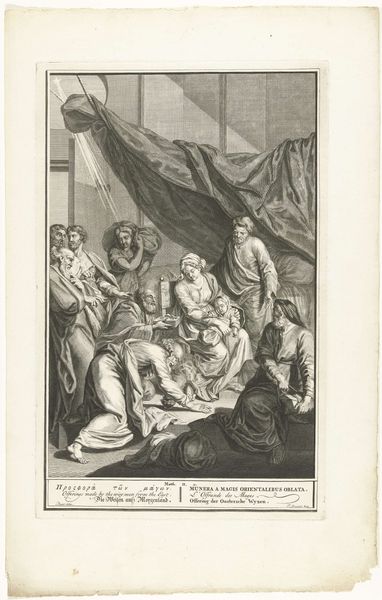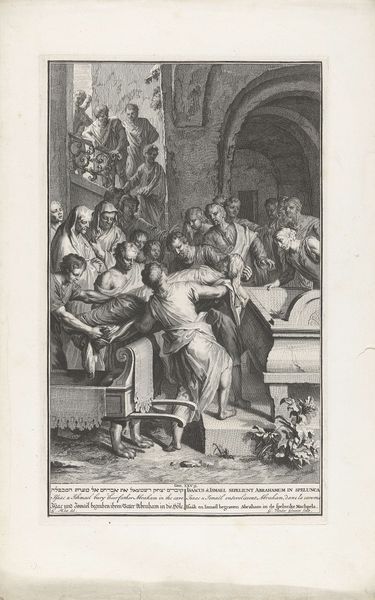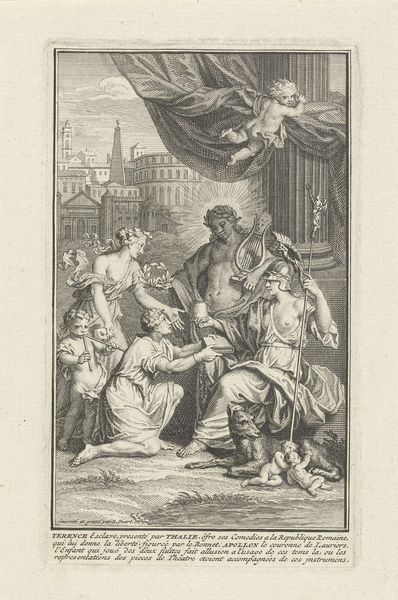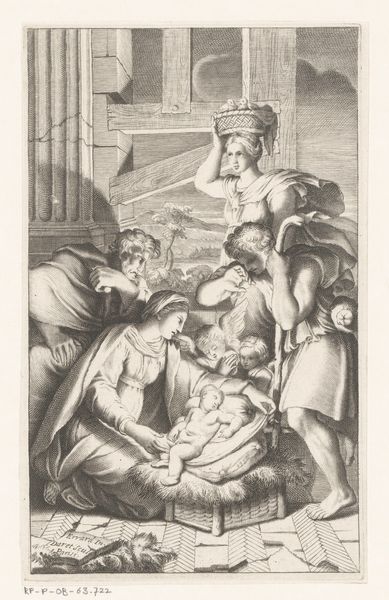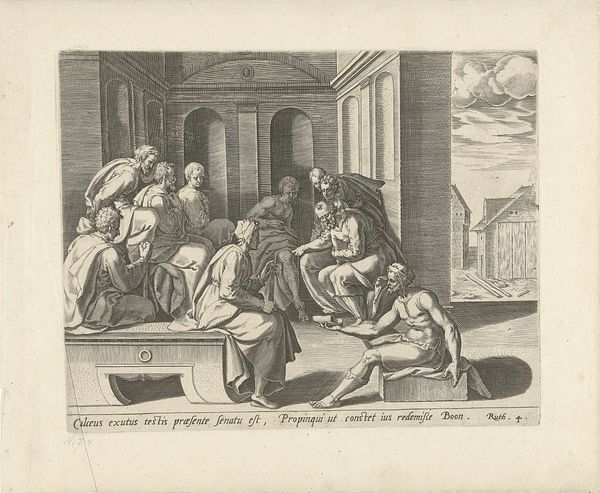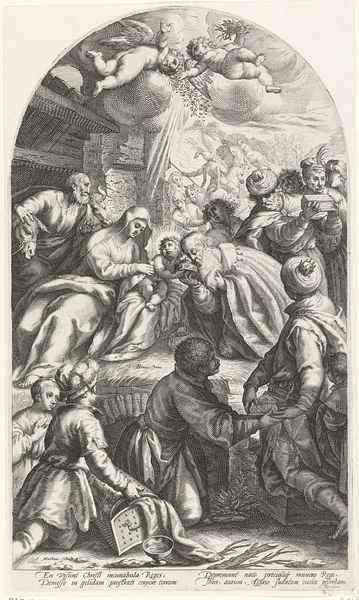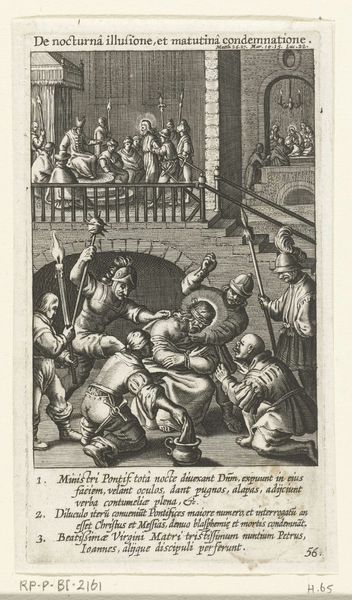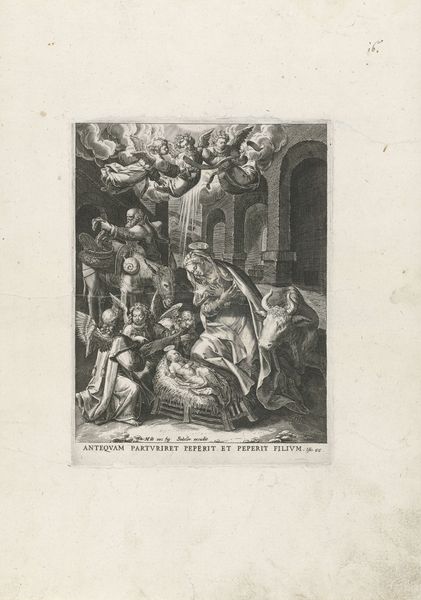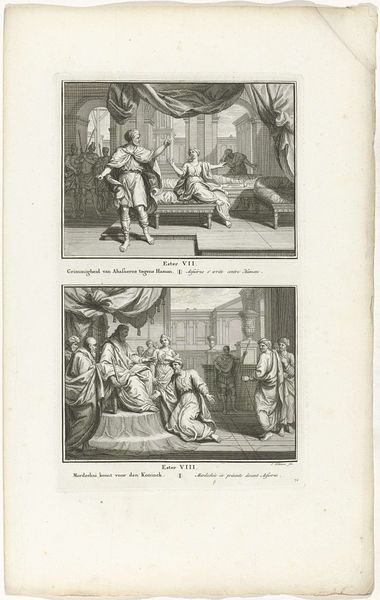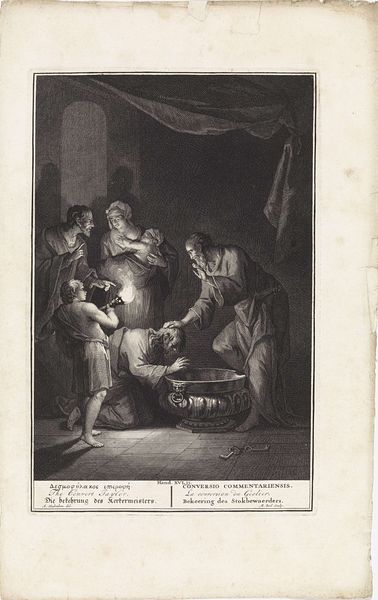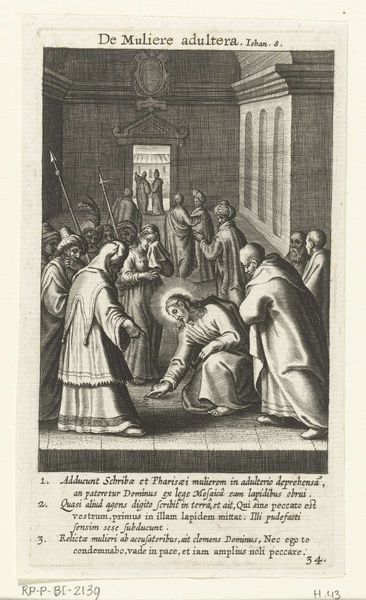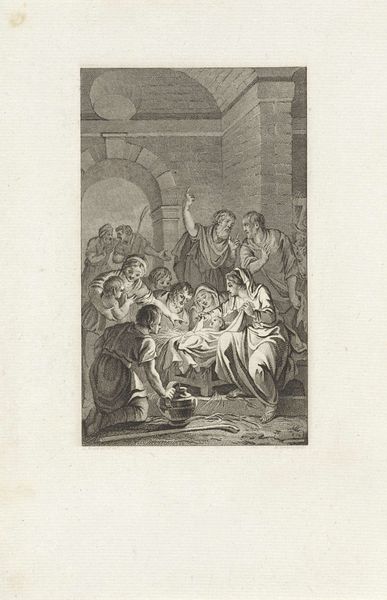
print, engraving
#
portrait
#
baroque
# print
#
old engraving style
#
history-painting
#
engraving
Dimensions: height 346 mm, width 220 mm
Copyright: Rijks Museum: Open Domain
Curator: Here we have "Christ with the Doctors in the Temple," a Baroque engraving dating roughly from 1679 to 1728, attributed to Abraham de Blois, currently held at the Rijksmuseum. My initial feeling is one of mild oppression; it is so dark and closed-in. Editor: Oppression is an interesting response. I am drawn to how it illustrates the challenging relationship between institutionalized wisdom, embodied by those scribes in the Temple, and radical insight, here presented through the figure of young Jesus. Look how small he is and yet how central he sits on the picture plane! Curator: Yes, but note how they all direct their gazes and hand gestures to the small figure. He’s very clearly the center of attention. I can feel a potent narrative thread at work; these religious leaders appear equal parts intrigued, disturbed, and, dare I say, threatened. Their tradition is at a crossroads of innovation. Editor: Agreed, his presence signifies a pivotal shift. In a broader social and historical context, the Baroque style aimed to instill reverence and communicate complex theological ideas to wider audiences. But this image…it feels like a subtle questioning. Do we blindly accept authority, or challenge it with compassion and individual knowing? Curator: Symbolically, the closed space emphasizes that tension—between a sacred past and an evolving spiritual consciousness. It creates this fascinating dichotomy, drawing from and potentially questioning traditions of religious iconoclasm that had deeply disrupted European life just decades before its creation. It could simply be read as illustrating the story in the gospel of Luke, of course, but that rendering also embodies, I feel, the cultural shifts then happening. Editor: Perhaps the visual darkness even emphasizes the obfuscations, the potential blind spots that can plague even learned and supposedly enlightened institutions. The young are literally always the future, always positioned to create a reckoning, but especially so when society enters moments of paradigm shift. I think the placement in the archives of the museum lends added nuance and gravity, don't you think? Curator: The darkness and complexity may serve a valuable function of honoring and questioning both cultural progress and regression through visual art. Perhaps De Blois is urging us to sit longer in moments of difficulty, moments of confusion, where progress and tradition can seem opposed to each other in society and culture. Editor: It’s images like this that demonstrate why engaging with older forms and histories can equip viewers to tackle a multitude of present-day and pressing cultural dialogues. It helps build, and honor, our collective memory.
Comments
No comments
Be the first to comment and join the conversation on the ultimate creative platform.
